
Bruce Bower has written about the behavioral sciences since 1984. He often writes about psychology, anthropology, archaeology and mental health issues. Bruce has a master's degree in psychology from Pepperdine University and a master's degree in journalism from the University of Missouri. Following an internship at Science News in 1981, he worked as a reporter at Psychiatric News, a publication of the American Psychiatric Association, until joining Science News as a staff writer. In 1996, the American Psychological Association appointed Bruce a Science Writer Fellow, with a grant to visit psychological scientists of his own choosing. Early stints as an aide in a day school for children and teenagers with severe psychological problems and as a counselor in a drug diversion center provided Bruce with a surprisingly good background for a career in science journalism.

Trustworthy journalism comes at a price.
Scientists and journalists share a core belief in questioning, observing and verifying to reach the truth. Science News reports on crucial research and discovery across science disciplines. We need your financial support to make it happen – every contribution makes a difference.
All Stories by Bruce Bower
-
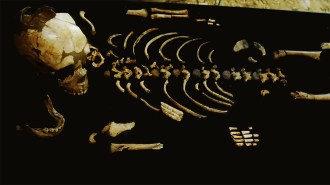 Anthropology
AnthropologyNeandertal babies had stocky chests like their parents
Our evolutionary relatives may have inherited short, deep rib cages from their ancient ancestors.
-
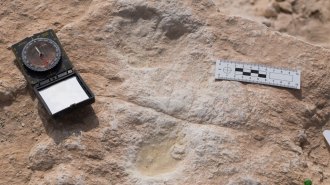 Anthropology
AnthropologySeven footprints may be the oldest evidence of humans on the Arabian Peninsula
In what’s now desert, people and other animals stopped to drink at a lake more than 100,000 years ago, a new study suggests.
-
 Science & Society
Science & Society‘The Origins of You’ explores how kids develop into their adult selves
A new book describes the interplay of nature and nurture as children, at least in Western societies, grow up.
-
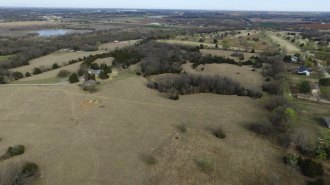 Humans
HumansDrones find signs of a Native American ‘Great Settlement’ beneath a Kansas pasture
An earthwork buried under a cattle ranch may be part of one of the largest Native American settlements ever established north of Mexico.
-
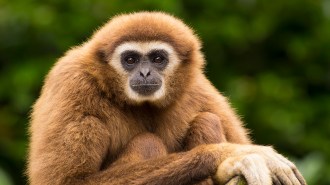 Anthropology
AnthropologyA stray molar is the oldest known fossil from an ancient gibbon
A newly described tooth puts ancestors of these small-bodied apes in India roughly 13 million years ago.
-
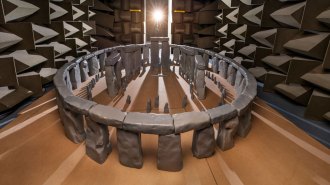 Archaeology
ArchaeologyStonehenge enhanced sounds like voices or music for people inside the monument
Scientists created a scale model one-twelfth the size of the ancient stone circle to study its acoustics.
-
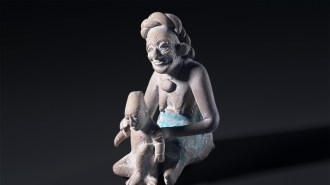 Humans
HumansAncient sculptures hint at universal facial expressions across cultures
Interpreting the emotions carved onto sculptures from long ago offers a new way to study how humans perceive facial expressions.
-
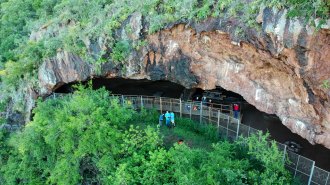 Archaeology
ArchaeologyThe oldest known grass beds from 200,000 years ago included insect repellents
Found in South Africa, 200,000-year-old bedding remnants included fossilized grass, bug-repelling ash and once aromatic camphor leaves.
-
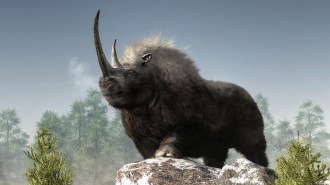 Life
LifeClimate change, not hunters, may have killed off woolly rhinos
Ancient DNA indicates that numbers of woolly rhinos held steady long after people arrived on the scene.
-
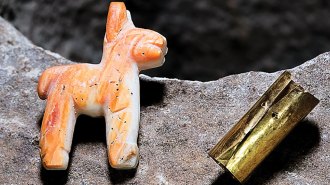 Archaeology
ArchaeologyA submerged Inca offering hints at Lake Titicaca’s sacred role
Divers found a stone box holding a figurine and a gold item, highlighting Lake Titicaca’s sacred status to the Inca.
-
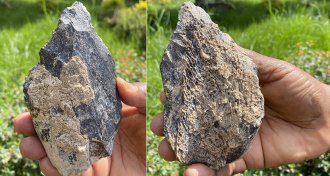 Archaeology
ArchaeologyThis 1.4-million-year-old hand ax adds to Homo erectus’ known toolkit
A newly described East African find, among the oldest bone tools found, shows the ancient hominids crafted a range of simple and more complex tools.
-
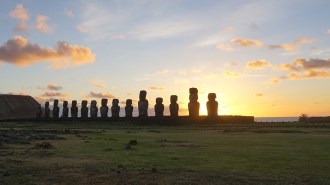 Genetics
GeneticsSouth Americans may have traveled to Polynesia 800 years ago
DNA analyses suggest that Indigenous people from South America had a role in the early peopling of Polynesia.